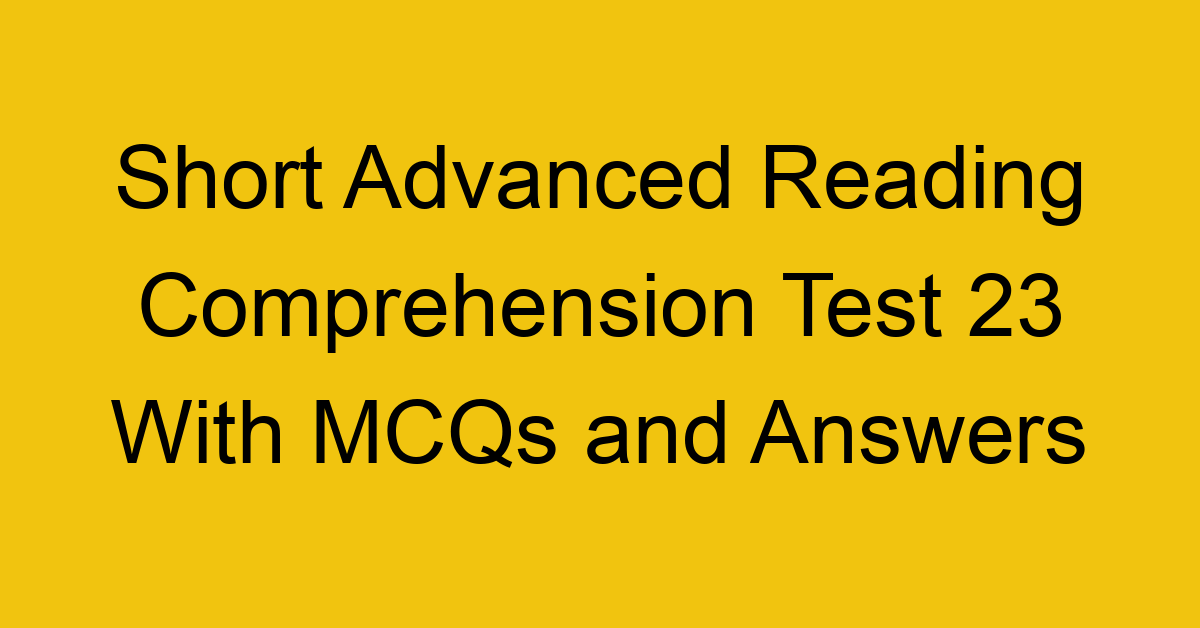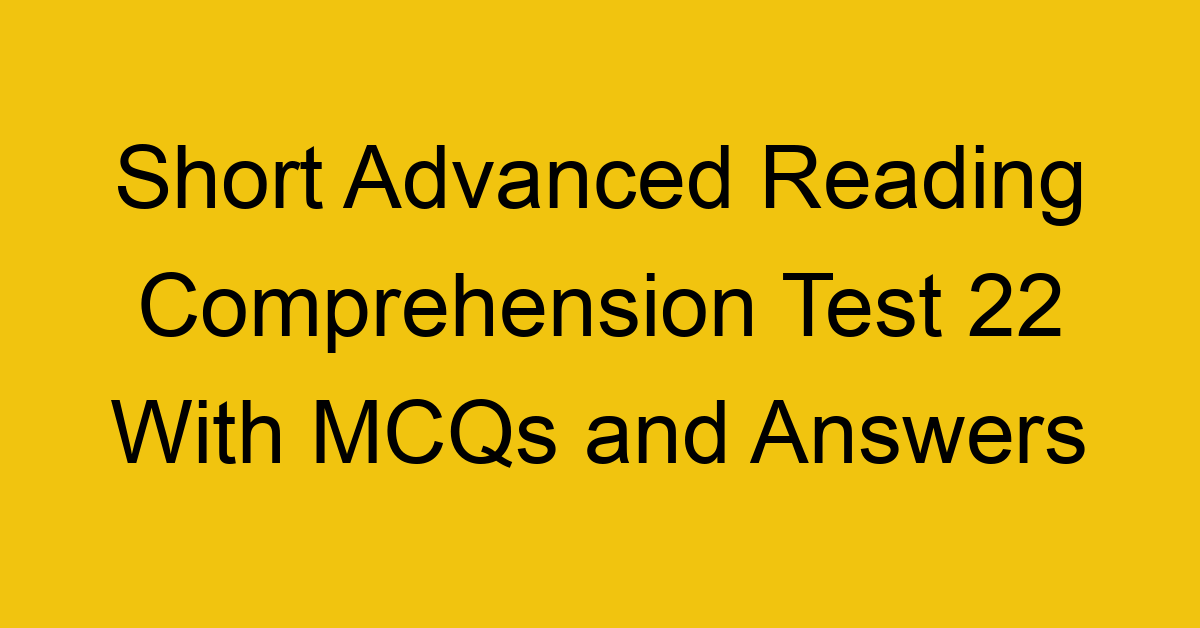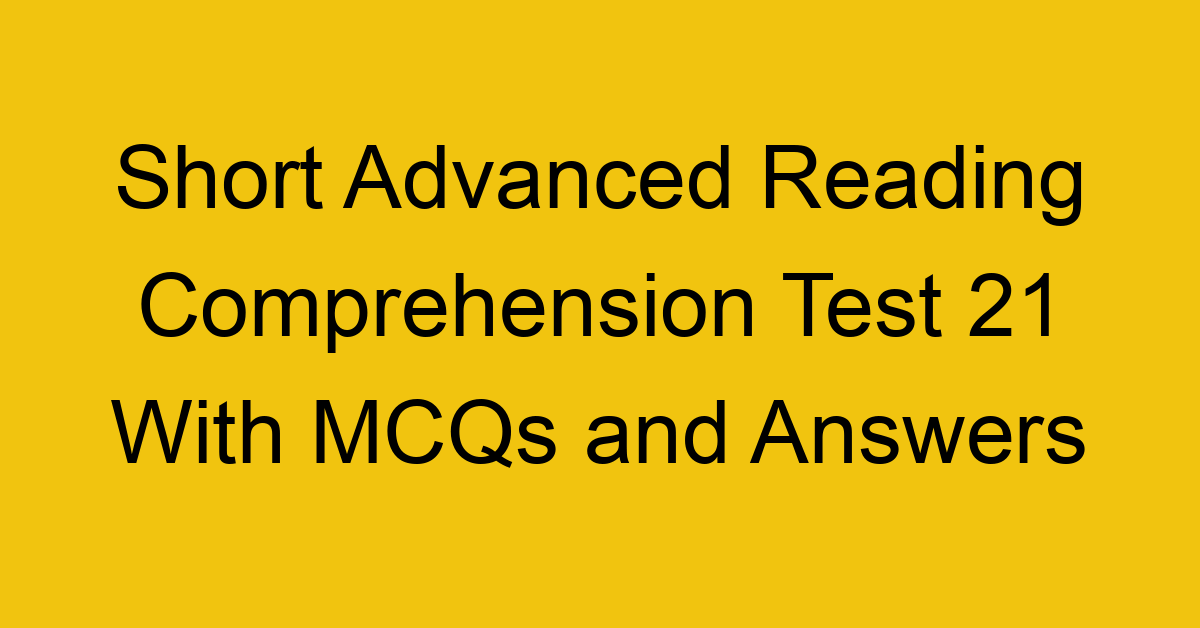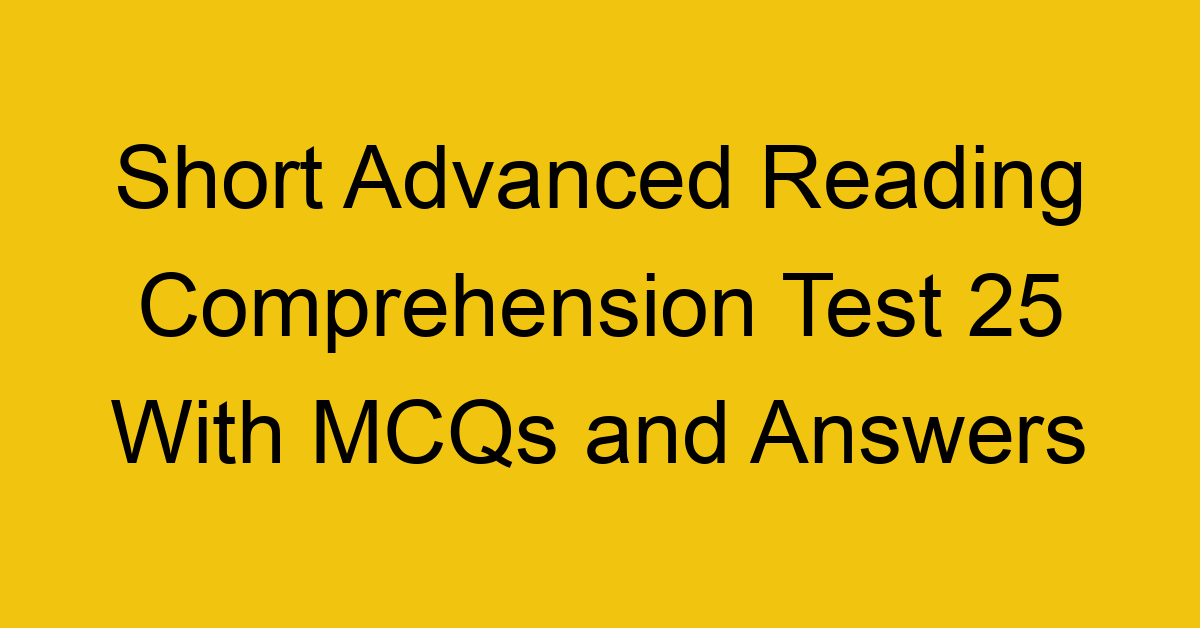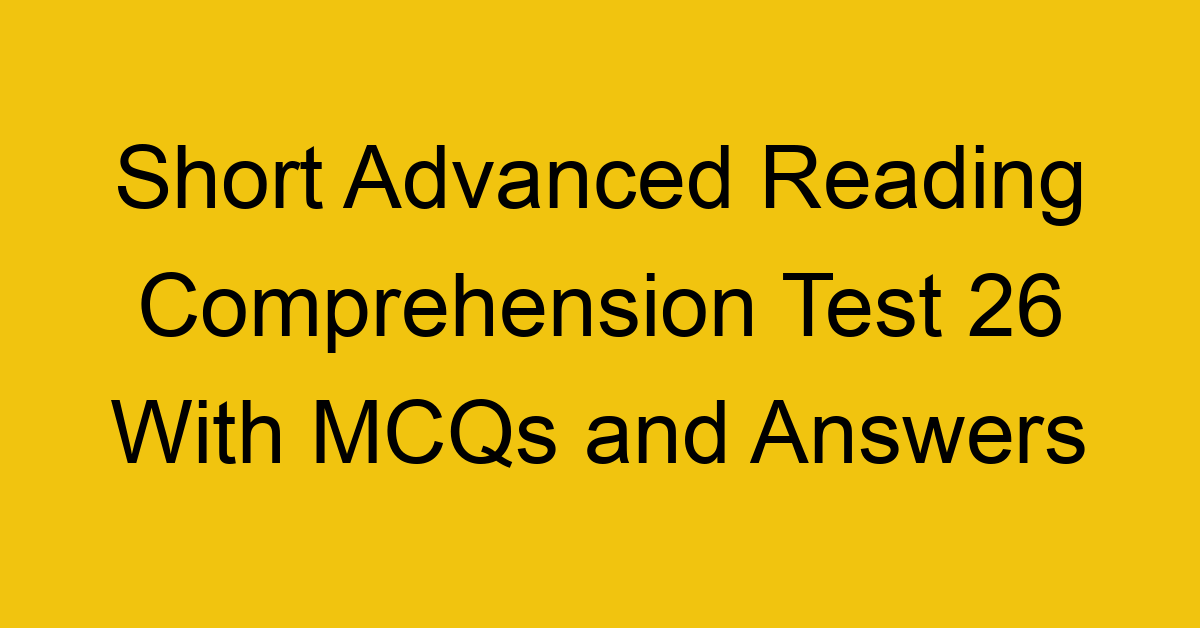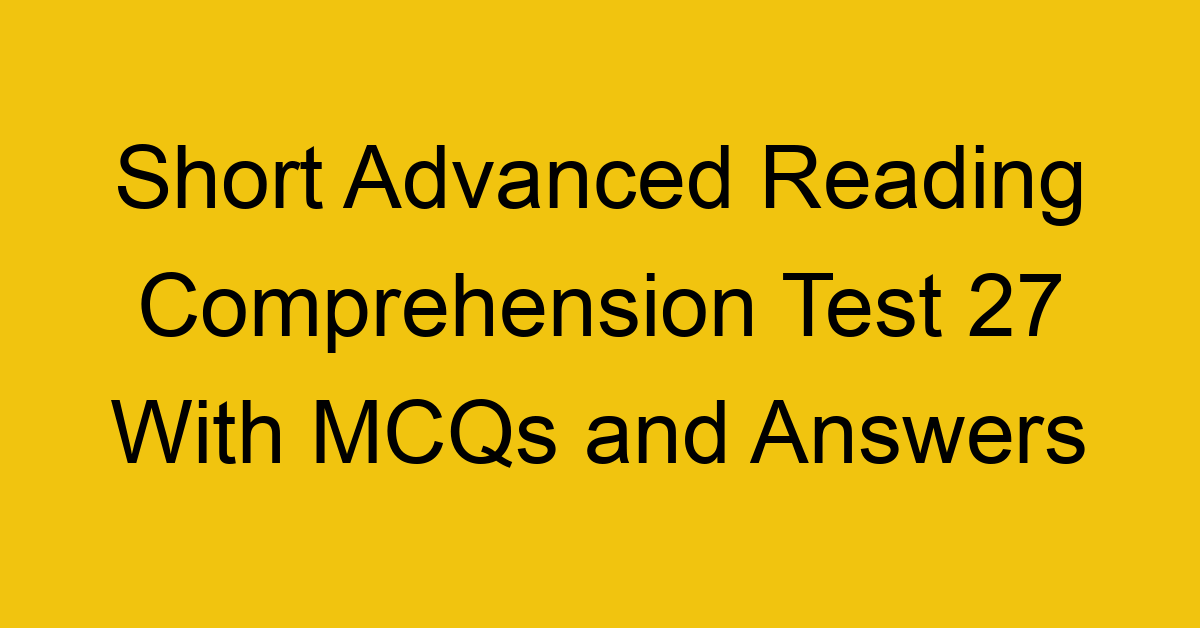Short Advanced Reading Comprehension Test 24 With MCQs and Answers
Question 1 |
(Please note: The following questions are related to a specific reading passage, available solely before the first question. Remember, referring back to the reading text while answering the questions may be helpful to ensure accuracy.)
The paradox of the American gun culture is that it is undermining the very values it was meant to protect. Do you remember Franklin Roosevelt's famous "Four Freedoms"? These were what America ostensibly fought World War II over. One of them was "freedom from fear." That battle has been lost. Even outside the main cities, the US is now a land of real freedom only during daylight. We have reached a point in recent years where people believe they have to constantly peer over their shoulders as if being pursued by the KGB. This routine fear is now so much part of life in the US that Americans have begun to take it for granted. We instinctively avoid large sections of cities, using mental maps in our heads that are unavailable to tourists. Last year I was in Japan. It is a worse place to live than the US in many respects. But it is possible to walk in a park in Tokyo at midnight fearlessly just as it was in America as recently as the 1950s. This freedom felt strange to me as if a state of fear about physical safety is normal. And it is. Barricading oneself at home all night is now natural; wandering around freely and alone - once the quintessential American experience - is now foolhardy.
What has been lost is _____.
A | the arms that Americans possessed to fight in World War II |
B | the battle for freedom from fear |
C | four freedoms touched on in Franklin Roosevelt's famous book |
D | World War II |
E | a small skirmish in the USA |
Question 2 |
In many American cities, _____.
A | people feel free to walk outside only after dark |
B | those arming themselves for self-defence now attack others in daylight |
C | guns are waning in value |
D | only during daylight is it probable to talk of real freedom to be out |
E | the battle for liberty from foreign rule has been lost |
Question 3 |
Tourists are more in danger as _____.
A | they do not have any maps to know their way |
B | maps that can be owned by Americans are inaccessible to tourists |
C | maps showing larger parts of cities are usually unavailable to tourists |
D | mental maps introduced lately to help people that walk out after the dark falls |
E | they lack Americans' instinctive awareness of which parts of cities are more dangerous |
Question 4 |
People struggling against starvation, ignorance and disease value political ideology only to the extent that it affects their own desperate condition. Similarly, the evils of the drug trade are relative. Peasants, struggling to put food on the table for their children, see income from coca leaf production as their salvation. Narco traffickers, taking advantage of the desperation of poverty and the seemingly insatiable North American demand for drugs, often provide a welcome means of economic stability for those unfortunates for whom there are few alternatives. Many people in Latin America, actually, argue passionately that it is far more preferable to send cocaine north for the gringos than to allow their own children to starve. The consequences, they say with a shrug, are a North American problem.
It is stressed in the passage that _____.
A | coca, from which cocaine is produced, is grown by North Americans for illegal income as they are economically hopeless |
B | Latin Americans provide an indispensable market for narcotraffickers as they would do anything to save their children from starvation |
C | political ideology is not valued by those struggling against starvation, ignorance and disease unless it affects their economic deprivation positively |
D | only for a small amount of money they earn by growing coca, North Americans cause the death of many people in North America |
E | it is by North Americans that the gringos were accustomed to drug use |
Question 5 |
Coca farmers deny any responsibility for probable bad results of this trade _____.
A | saying reluctantly that it is the problem of the North Americans |
B | arguing anxiously that it is Latin America's problem. |
C | with a gesture of dismissal |
D | placing the blame on the regional government |
E | with a gesture suggesting they do not care about them |
Question 6 |
A stable amount of money earnable by the production of coca is regarded by Latin Americans in miserable conditions as _____.
A | a solution to develop their country economically |
B | the only way for saving their children from dying of hunger |
C | the unique solution to poverty all over the world |
D | salvation from ignorance and disease |
E | something which can be done to a certain extent |
Question 7 |
The problems which the Third World will experience in the coming decades are immense. Many nations there will continue to face economic stagnation fuelled by weak world commodity prices, a shortage of investment capital, debt, ecological decay, underdeveloped infrastructure, population pressure and the absence of available and appropriate technology. The movement toward democracy which exploded in the 1980s will experience fits and starts as sectarian, military involvement in politics and international tensions will hinder political reforms. Uneven economic development and stifled political reform, combined with ever-increasing public demands, will set the stage for violent conflict.
_____ is not estimated to cause an economic recession.
A | Lowering of the prices of products |
B | The shortage of money for investment |
C | Environmental betterment |
D | Overpopulation |
E | Unavailability of technology |
Question 8 |
What characterises Third World Countries is _____.
A | economic insufficiency |
B | political inconsistency |
C | technological backwardness |
D | rising public demands |
E | both economic and political inconsistency |
Question 9 |
In the process of democratisation, administrative irregularities will be experienced on account of _____.
A | slowed political reforms |
B | economic sectors and the army involvement in politics |
C | international problems |
D | the involvement of the military and religious groups in politics |
E | violent debates |
Question 10 |
Although they are obviously different in length, the paragraph and the essay have structural similarities. For instance, the paragraph is introduced by a topic sentence controlling the whole paragraph. In the essay, the first paragraph provides introductory material and reflects the topic focus. The other thing is that the sentences in the body of a paragraph develop its introductory sentence. Likewise, the framework of the essay consists of a number of paragraphs that expand and support the ideas presented in the introductory paragraph. Lastly, a restatement or observation of a conclusive nature ends the paragraph. The essay, too, has an ending paragraph inclusive of a logically and psychologically satisfying completion.
The major idea expressed in the passage is _____.
A | both the essay and each paragraph have introductory sentences to which the other sentences relate |
B | the body of an essay is structurally different from that of a paragraph |
C | generally, the first sentence of the essay controls all the sentences in it as that of the paragraph |
D | despite their obvious dissimilarities in length, the essay and the paragraph are structurally similar |
E | each paragraph is an essay in itself because of so many similarities |
Question 11 |
It would be wrong to say _____.
A | a simple scanning of the first paragraph of an essay gives the reader enough information about what it is all about |
B | the first paragraph of an essay is usually a simple collection of the controlling ideas of its paragraphs |
C | in an essay, each paragraph is written independently of the introductory paragraph |
D | it is usual in each essay that an ending paragraph brings ideas to a reasonable and psychologically satisfactory completion |
E | conclusive statements are covered in the initial paragraph |
Question 12 |
In a good paragraph, _____.
A | the interconnectedness of ideas is not so important as in the whole essay |
B | no further sentence after the introductory sentence should remind the reader of the topic focus |
C | rather than concise and expressive sentences, many details supportive of the controlling idea may be written irrespective of the length |
D | any sentence written after the introductory sentence should be relevant to it |
E | coherence is not so significant as cohesion in paragraphs |
Question 13 |
For terrorists that reckon the U.K. among their enemies, two options are possible. One is to strike targets within Britain. For various reasons, covering meticulously prepared counterterrorist measures enforced by government agencies is difficult. The other option is to increase the level of destruction. It is obvious that chemical, biological and eventually nuclear weapons provide the greatest opportunities. The capability is there, even in the nuclear arena where terrorists can substitute technologically simple, deliberate atomic pollution for technologically more complicated atomic weapons. The absence of long-range delivery systems for weapons of mass destruction, which limits their utility for non-superpowers, is not a factor for terrorists. An immobile, warehouse-size nuclear device would be acceptable to them.
The utility of weapons of mass destruction for technologically undeveloped nations is limited as _____.
A | they have no technology to manufacture such nuclear missiles |
B | they lack the technology to launch nuclear mass destructive missiles to a long distance |
C | the absence of long-range launching systems is not a factor for such non-superpowers |
D | such non-superpowers are underdeveloped nations that are remote to the U.K. to pose a threat |
E | of the lack of immobile warehouses from which to launch them |
Question 14 |
It can be concluded from the passage that _____.
A | terrorists can possibly replace technologically complicated atomic explosions with less complex, deliberate atomic pollution |
B | terrorists cannot pose a threat to the U.K. since their lack of long-range delivery systems limits the utility of weapons of mass destruction |
C | an unmoving target of the size of a warehouse would satisfy terrorists if they could destroy it successfully |
D | among the various reasons for the first option not to materialise is the governmental enforcement of measures against the sale of destructive materials to terrorist |
E | in spite of the fact that the first option is possible to realise the second one is unquestionably impracticable |
Question 15 |
The first option mentioned is nearly impossible due to the fact that _____.
A | the level of destruction of the weapons that terrorists often use is too low |
B | terrorist groups have no weapons available |
C | carefully taken anti-terrorist measures makes it difficult to materialise |
D | terrorists reckon the U.K. among their enemies |
E | the government forces counterterrorism agencies to work unwillingly enough |
Question 16 |
Almost totally devoid of natural resources of commercial value, Israel in its early years focused on agricultural production. Chemical manufacturing, diamond cutting and polishing, and developing high-technology products with commercial and military applications have surpassed agriculture as the most important areas of Israel's modern economy. One out of four Israeli workers today is employed directly or indirectly by the arms industry. Even the Kibbutz, the socialist agricultural co-operatives which were the most prominent expression of the Jews' "Return to the land," now earn more of their income through manufacturing than agricultural production.
The most appropriate conclusion to be drawn from the passage is that _____.
A | if Israel had enough natural resources for commercial production, it would not concentrate on agriculture now |
B | Israel has developed commercially as well as agriculturally and politically |
C | Israel's recent concentration on the manufacturing of commercial products has led to better food production methods |
D | since the Jews gathered in Israel, they have tried to build a commercially perfect country |
E | even though the major industry of Israel in its early years was agriculture, it is commercially developed enough now |
Question 17 |
It seems that the most significant constituent of Israel's modern economy is _____.
A | agricultural production |
B | chemical manufacturing |
C | agricultural co-operatives |
D | the arms industry |
E | commercial retrogression |
Question 18 |
The arms industry _____.
A | employs twenty-five per cent of all Israeli workers |
B | is to accuse of stagnation in agricultural production |
C | is devoid of natural resources of commercial value |
D | has surpassed chemical manufacturing |
E | is the largest agricultural co-operative |
Question 19 |
Military research has of course brought about the development of beneficial by-products, such as stronger plastics and metals, sophisticated electronics and other invaluable technical advancements which are used in many commercial products today. But non-military scientific research and advances only for the sake of knowledge of man's world have been pitifully underfinanced. As a response to threats that may be developed by other nations, military programs have been absorbing a great share of government funds to expand U.S. technology as rapidly as possible. With the growing appetite for military priorities, few sources of research funding are left that are not being allocated to the protection of national security.
Non-military research has been underfinanced _____.
A | for the sake of knowledge of man's world |
B | owing to the growing appetite of military officers for money |
C | for the reason that there is no money for non-military studies |
D | to prepare militarily for any threat that might be posed by other nations |
E | scientific researches are not so necessary as military ones |
Question 20 |
According to the passage, it is wrong to say that _____.
A | the allocation of too much money to military research is criticised, but it is undeniable that it sometimes helps non-military scientific research with its common findings |
B | non-military scientific research has to be abandoned since military ones also lead to technically valuable developments |
C | such funds have been allocated to military research under the pretext of protecting the national security |
D | that military research has been given priority in using government funds on account of military threats that might be developed by other nations |
E | non-military research is directed towards getting to know more about man's world |
Question 21 |
It is stressed in the passage that _____.
A | only a little is allocated to protecting national security |
B | the USA doesn't need any non-military research |
C | because of the growing appetite of military officers, there is no money left in the national budget |
D | research funds are no more allocated to security purposes |
E | the amount reserved for the maintenance of national security is surprisingly big |
Question 22 |
An English company called Katcha Products has devised a humane and environmentally friendly way to dispose of spiders, flies and wasps. Guaranteed not to harm the insect, the trap is composed of a long handle with a transparent pyramidal chamber at one end. The user allows the insect to land and then places the chamber over the insect. Twisting the handle causes a gravity-controlled shutter to close, trapping the insect inside. To release the bug, the user holds the trap horizontally and twists the shutter open. The trap may also be used by students and entomologists who wish to catch insects in the field for later examination.
The device introduced by the English company Katcha products _____.
A | kills the insect unmercifully |
B | is for the non-brutal seizure of pests |
C | first traps the pest inside and releases it a short time later |
D | is to be used to get rid of spiders mercifully |
E | is merely for scientific researched |
Question 23 |
If the trap is taken from the ground without the handle being twisted, _____.
A | the bug inside will die |
B | nothing occurs |
C | the insect inside will be free again |
D | the shutter will remain unopened |
E | the shutter will close tight trapping the bug inside |
Question 24 |
The device is invaluable for entomologists since _____.
A | they want to seize insects intact in order that they can be examined later |
B | it is transparent enough for the bug inside to be scientifically examined without taking it out |
C | the bug flies away when it is taken from the ground |
D | it destroys the environment |
E | it traps the insect in an opaque chamber |
⇦ |
List |
⇨ |
| 1 | 2 | 3 | 4 | 5 |
| 6 | 7 | 8 | 9 | 10 |
| 11 | 12 | 13 | 14 | 15 |
| 16 | 17 | 18 | 19 | 20 |
| 21 | 22 | 23 | 24 | End |

